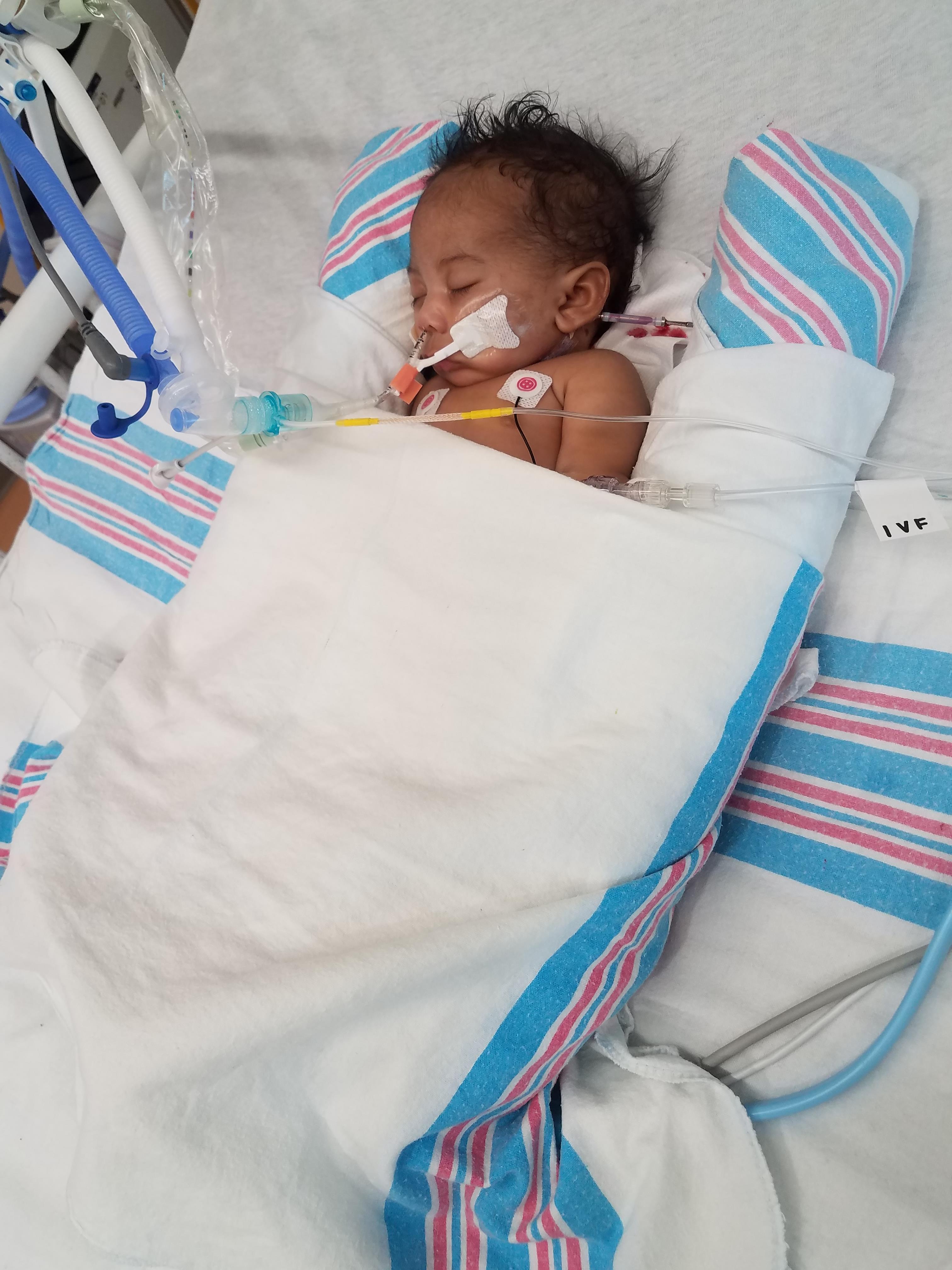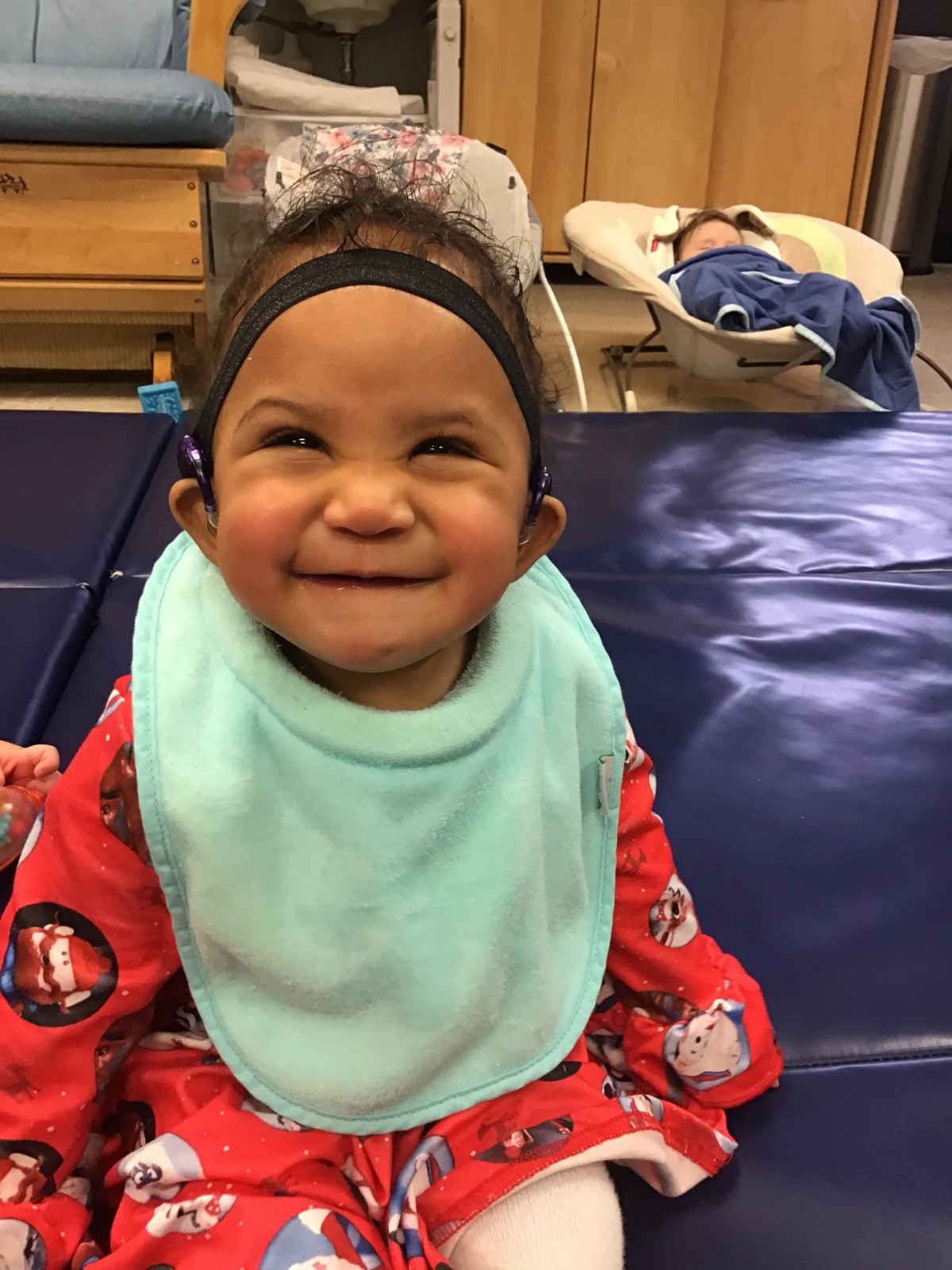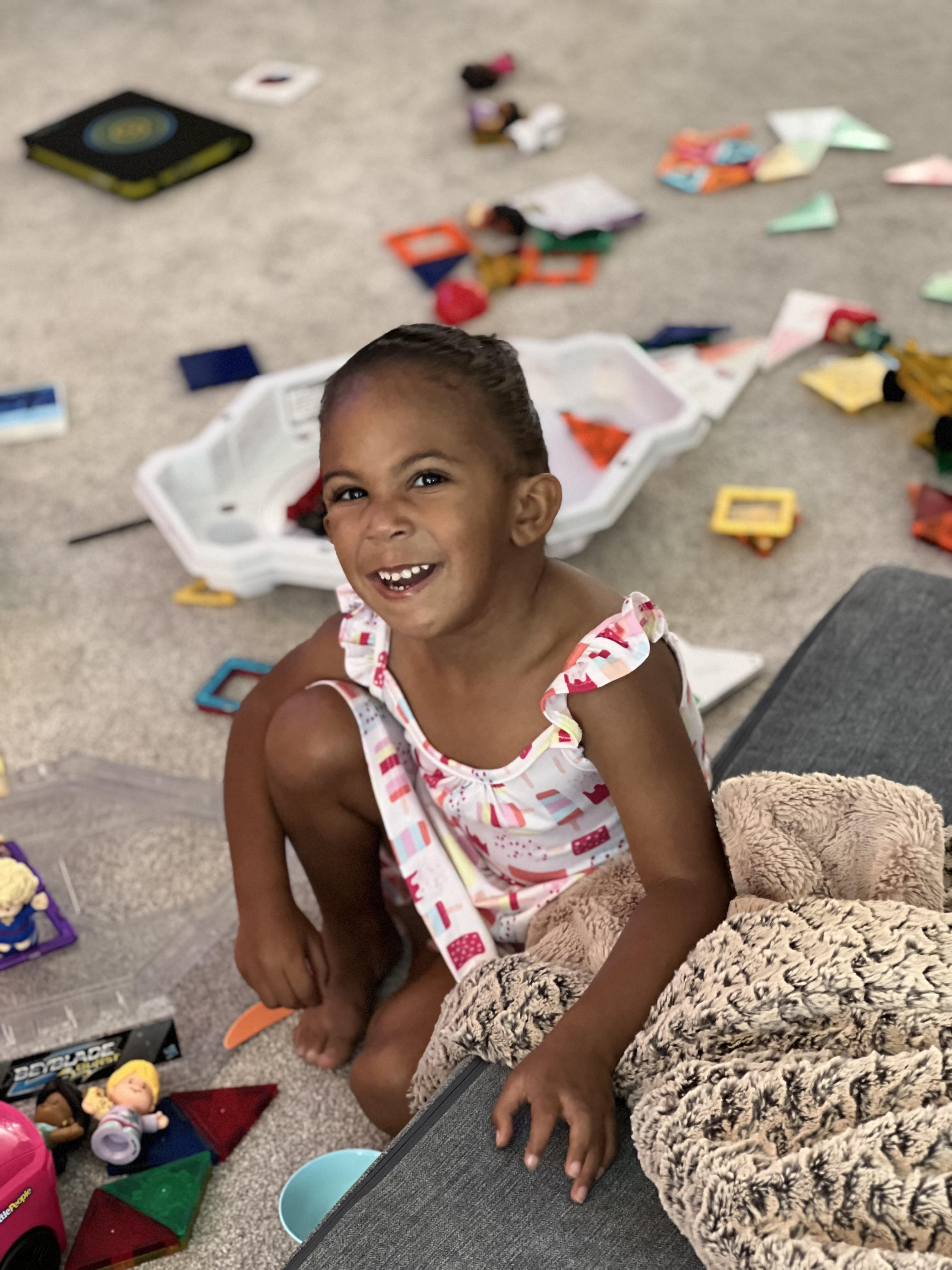Kenslee's craniofacial journey: A story of love, resilience, and exceptional care
- Category: Patient Stories
- Posted on:

Mistie and Jody Lasseigne, already blessed with two wonderful children, chose to open their hearts and home to fostering with the hope of eventual adoption. This heartfelt decision brought them to Kenslee, a beautiful baby girl who would soon become an irreplaceable part of their family.
“We received a phone call when Kenslee was two weeks old,” said Mistie. “We accepted her placement without hesitation, and soon met with the doctors at Terrebonne General Hospital. She was still in the NICU, and at that time, her diagnosis was unclear. It was there that we received Kenslee’s diagnosis.”
Kenslee was born with Pierre Robin Syndrome, a congenital condition characterized by a smaller-than-normal lower jaw, a tongue that falls back in the throat, and difficulty breathing. Her bottom jaw was pushed back so far that it obstructed her airway by pushing her tongue into it. Kenslee's physical appearance didn't immediately reveal the severity of her condition; she looked like a typical baby. 
“Kenslee fit right into our family like she was meant to be there,” said Mistie. “We instantly fell in love with her. Bringing her home was wonderful, and it came with challenges we were prepared to face.”
Due to her congenital craniofacial condition, Kenslee's breathing difficulties were significant, requiring constant monitoring and special positioning to keep her airway open. Feeding was another major hurdle due to her cleft palate, which prevented her from creating the suction needed to feed from a regular bottle. Instead, she used a special bottle that allowed her to drink without sucking.
When Kenslee was about 6 weeks old, she had her first appointment with the team at the Craniofacial Center at Children’s Hospital New Orleans, where they ordered a sleep study for her. The sleep study revealed she had over 200 apneas, which are pauses in breathing that can be a major concern. She required an oxygen monitor during this time. The results of the study prompted them to schedule immediate jaw correction surgery, one of several surgeries she would undergo before her first birthday.
Kenslee's journey began in June 2020 when she was just two months old. Dr. Mohamad Masoumy, surgical director of plastics and craniofacial surgery at the Craniofacial Center at Children’s Hospital, performed her first critical surgery to correct her jaw. This complex procedure involved breaking the bones on either side of her lower jaw and installing plates to keep them aligned as they grew back. The surgical team inserted rods behind her ears, which were turned twice daily to gradually move and grow her jaw forward. This process, though intense, was necessary to ensure that Kenslee could breathe properly. 
Concurrently, Dr. Jairo Torres, her otolaryngologist, placed ear tubes as a precaution due to her cleft palate affecting her sinus cavity and the position of her ears potentially impacting drainage. Kenslee spent two weeks in the hospital recovering, part of which was in a medically induced coma to aid her healing.
“It was a tough two weeks seeing her in this condition,” said Mistie. “Before her surgery, Dr. Masoumy and Dr. Torres went over the details of the procedures with us – explaining what would happen, what it would look like, and what we could expect. I was so nervous, but it helped us to prepare emotionally.”
A few months later, in September 2020, Kenslee underwent a second surgery with Dr. Masoumy to remove the plates from her jaw, now that her bones had grown and healed sufficiently. When Kenslee was nearly a year old, she had her third surgery to correct her cleft palate which was vital in improving her feeding and speech capabilities.
“We repaired Kenslee's cleft palate by orienting her palate muscles correctly and closing the gap in the roof of her mouth,” explained Dr. Masoumy. “This correction significantly improved her feeding ability, ensuring that food and liquids no longer entered her nasal cavity. This allowed for more efficient swallowing and nutrition absorption, leading to better weight gain. Additionally, the timing of the repair allowed for speech development during this critical time. At the Craniofacial Center at Children's Hospital New Orleans, our team provides comprehensive care for patients like Kenslee. Our coordinated approach ensures every aspect of their condition, from surgical interventions to ongoing support, is carefully managed to optimize outcomes.” 
Led by a team of medical experts including surgeons, pediatricians, speech therapists, and geneticists, the Craniofacial Center offers a holistic approach to treatment. They focus on individualized care plans, integrating surgical procedures with therapies to address each child's unique needs. This collaborative effort aims not only to correct physical anomalies but to support the health and development of every patient, ensuring they thrive beyond their medical challenges. Kenslee greatly benefited from this care.
In addition to Pierre Robin Sequence, Kenslee faced hearing loss in her first year and a half, necessitating the use of hearing aids. However, with early intervention services from Children's Hospital's audiology team, her hearing improved over time. Additionally, genetic testing revealed that Kenslee had Stickler Syndrome, which affects eyesight. In October 2023, Dr. Maria Reinosa, an ophthalmologist affiliated with Children’s Hospital surgically reinforced the muscles behind Kenslee's eyes.
Today, Kenslee is a thriving, vibrant 4 year old. She loves gymnastics, swimming, and school, and enjoys typical activities for her age. Her favorite foods include chicken nuggets, strawberries, and chocolate milk. She is observant, conscientious, and has a zest for life that inspires everyone around her. 
“We cannot thank Children’s Hospital enough,” said Mistie. "Every member of the craniofacial team provided exceptional care to Kenslee. They explained every step of the process in understandable terms and offered unwavering support. The hospital's approach of involving our family in every decision and ensuring open communication made a world of difference during Kenslee's journey.”
Currently, Kenslee is being closely monitored by her care team with annual visits to the clinic to assess her development and address any future needs, including potential orthodontic work. Her family remains hopeful and grateful for the progress she has made and the care she continues to receive.
Mistie encourages other families facing similar challenges to trust their medical team, ask as many questions as needed, and lean on the support of others, including doctors, family, and friends.
"As scary as it may be, the team at Children’s Hospital guided us through every step of the journey, which was incredibly reassuring and helped us emotionally. Having a trustworthy team by your side makes all the difference in navigating this process. Don’t hesitate to ask questions—you can never ask too many.”
For more information about the Craniofacial Center at Children’s Hospital, visit Craniofacial Surgery | Children's Hospital New Orleans (chnola.org)



